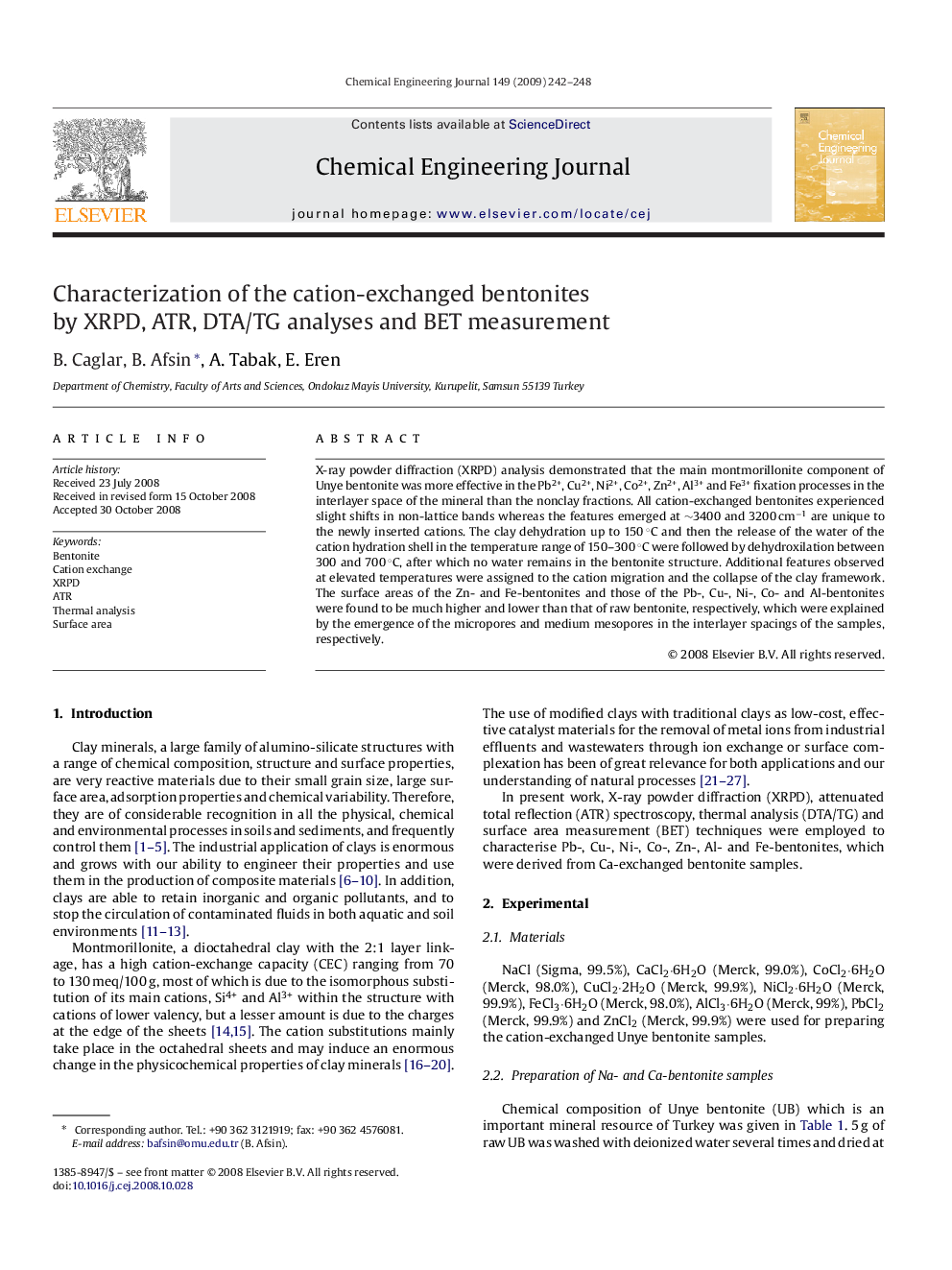| Article ID | Journal | Published Year | Pages | File Type |
|---|---|---|---|---|
| 152320 | Chemical Engineering Journal | 2009 | 7 Pages |
X-ray powder diffraction (XRPD) analysis demonstrated that the main montmorillonite component of Unye bentonite was more effective in the Pb2+, Cu2+, Ni2+, Co2+, Zn2+, Al3+ and Fe3+ fixation processes in the interlayer space of the mineral than the nonclay fractions. All cation-exchanged bentonites experienced slight shifts in non-lattice bands whereas the features emerged at ∼3400 and 3200 cm−1 are unique to the newly inserted cations. The clay dehydration up to 150 °C and then the release of the water of the cation hydration shell in the temperature range of 150–300 °C were followed by dehydroxilation between 300 and 700 °C, after which no water remains in the bentonite structure. Additional features observed at elevated temperatures were assigned to the cation migration and the collapse of the clay framework. The surface areas of the Zn- and Fe-bentonites and those of the Pb-, Cu-, Ni-, Co- and Al-bentonites were found to be much higher and lower than that of raw bentonite, respectively, which were explained by the emergence of the micropores and medium mesopores in the interlayer spacings of the samples, respectively.
